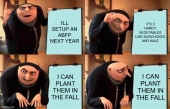


This is very effective if, as you say, there are external parasites (diatomaceous earth also helps with internal parasites) but if the itching stems from an allergic reaction other than that, the DE won't help. but certainly won't hurt. It's vital only to use FOOD grade DE.[/quote wrote:
DE (diatomaceous earth) only works at killing insects/parasites when it's DRY. Once it gets wet, the killing mechanism (the way it pierces the insect body to dehydrate it to death) no longer works.
This link does a great job explaining why that's true.
https://thepoolandlawn.com/what-happens-if-diatomaceous-earth-gets-wet/

Or a very harsh area! We occasionally hit -40 C/F and potatoes overwinter for me too, but it depends on the variety. A theory I'd been playing with is that our sand allows all water to drain away from the tubers, but I've also seen people on clay say taters overwinter for them as well. So I guess genetics is my current best theory.

paul wheaton wrote:

I was on the road and visiting a homestead and there it was. I know that I need about a quarter of "dawn" compared to what I'm used to.
Let me plug what I use quickly:
oasis brand dish soap for greywater systems
oasis brand laundry detergent for greywater systems
If they have it, get it now. Because it is available only half the time. So when it is available, you need to stock up.

Cassie Langstraat wrote:Maddie was recently at Wheaton Labs and tooks a bunch of great pictures. You can see them all here. But here are a few good ones of wofati 0.8.






paul wheaton wrote:have you read mike oehler's book?


paul wheaton wrote:
Here are two pictures I just made up that attempt to express what is in my head.